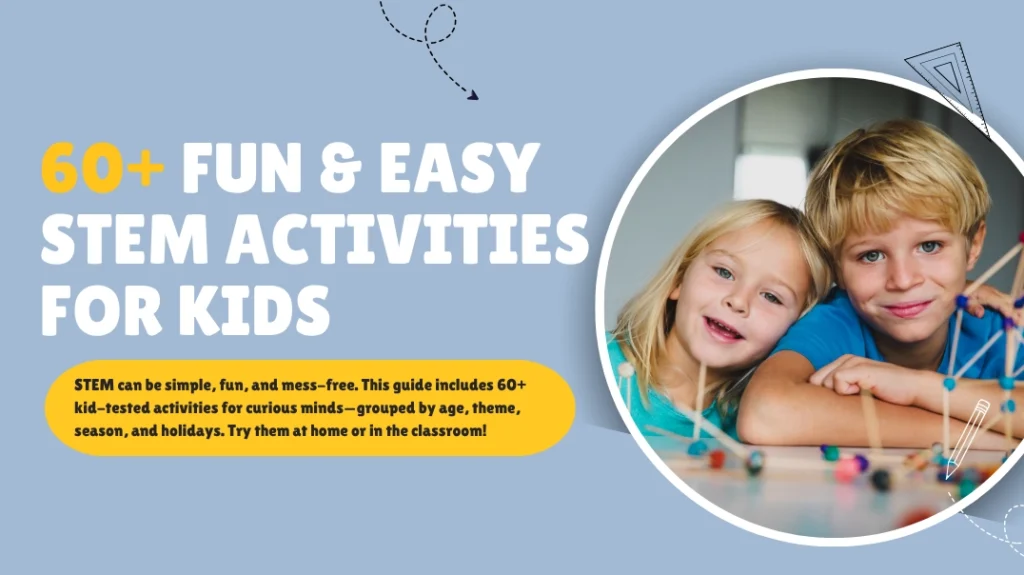Looking for fun, easy STEM activities for kids that actually work—at home, in the classroom, or outdoors?
STEM activities are hands-on projects that help children explore science, technology, engineering, and math in playful, meaningful ways. They’re not just for science clas你的s—they’re perfect for everyday learning through building, experimenting, problem-solving, and play.
Whether you’re a parent, teacher, or early education provider, you can use these activities to support creativity, critical thinking, and fine motor skills. You can try them during school hours, after class, on the weekend, or even at holiday events. Many require just basic supplies—like paper, tape, or simple craft materials—and can be done right at home or with your learning group.
This guide shares 60+ real, tested STEM activities for kids, organized by season, holiday, theme, and age group. Each one includes a clear goal, a list of materials, and simple steps to follow—so you can get started right away with confidence.
STEM vs. STEAM: What’s the Difference?
STEM stands for science, technology, engineering, and math—but when you add the “A” for arts, it becomes STEAM. The “A” introduces creativity, design, and expression into traditional STEM learning. While this article focuses mainly on hands-on STEM activities, we’ve created a full comparison of STEM vs. STEAM to help you decide which approach fits your goals.
Read our full guide on STEM vs. STEAM here
Quick & Easy STEM Activities for Kids
These activities are perfect for busy days, short attention spans, or spontaneous STEM time. They’re hands-on, mess-friendly, and require only simple materials you probably already have at home or in the classroom. Best of all, they cover ages 2 and up—because it’s never too early to explore, test, and tinker!
Balloon Rocket Race
Age: 4–7
Materials: balloon, string, straw, tape, two chairs
Stretch a string tightly between two chairs and thread a plastic straw through it. Blow up a balloon (don’t tie it), tape it to the straw, and let it go. The escaping air propels the balloon forward, creating an instant giggle-worthy STEM moment. Kids love the “zoom,” and you get an easy, visual way to show how air can create motion. For extra fun, race two balloons side-by-side or try different balloon shapes to see which goes further.
Ice Cube Melt Race
Age: 3–6
Materials: 3 ice cubes, metal tray, wooden board, plastic plate, stopwatch or timer
Place each ice cube on a different surface—like a metal tray, a wood block, and a plastic plate. Start the timer and observe which melts fastest. Encourage kids to guess first, then test. This quick experiment introduces early learners to the concept of heat transfer and gets them thinking about how different materials interact with temperature. Bonus: no cleanup beyond a few drops of water!
Color Swirl in Milk
Age: 2–5
Materials: shallow dish, whole milk, food coloring, dish soap, cotton swab
Pour milk into a shallow dish, add drops of food coloring, and touch the center with a soap-dipped cotton swab. The colors suddenly swirl and dance away from the soap! This is a perfect sensory STEM activity for toddlers and preschoolers, introducing them to cause and effect, surface tension, and color mixing—all in one magical minute. It’s safe, fast, and repeatable.
Paper Bridge Challenge
Age: 5–8
Materials: paper, 2 books, coins or small toys
Lay a piece of paper flat across two books to form a bridge. Ask: How many coins can it hold before collapsing? Now fold the paper accordion-style and try again. It’s amazing how such a small design change makes a big difference! This activity teaches kids about structure, weight distribution, and basic engineering—all in less than 10 minutes.
Pom-Pom Ramp Races
Age: 3–6
Materials: cardboard pieces or wooden planks, pom-poms or toy cars, blocks or books for height
Build simple ramps by leaning cardboard against books or blocks. Race pom-poms down each one, trying different angles. Which ramp is fastest? Which is slowest? This playful challenge helps kids explore gravity, speed, and incline—all while crawling around and giggling on the floor. Add a stopwatch to bring in early math and measurement concepts.
Magnet Mystery Sort
Age: 4–7
Materials: magnet wand, small items like paper clips, keys, buttons, coins, rubber bands, toy parts
Gather small items from around the room and let kids predict whether each one will stick to a magnet. Then test them! Separate items into “magnetic” and “not magnetic” piles. This quick activity sparks curiosity and helps build early classification and observational skills. It’s also a great introduction to how magnets interact with different materials—and a favorite for independent play stations.
Float or Sink?
Age: 2–5
Materials: large bowl or tub of water, variety of small safe objects (toy block, spoon, rock, leaf, plastic cap)
Fill a tub with water and invite your child to drop in one object at a time. Ask them to guess: Will it float or sink? Then test! Talk about size, weight, and shape. This is a fantastic water-based activity for toddlers and preschoolers that combines sensory play with basic science thinking. Super easy to set up, endlessly repeatable, and great for group activities too.
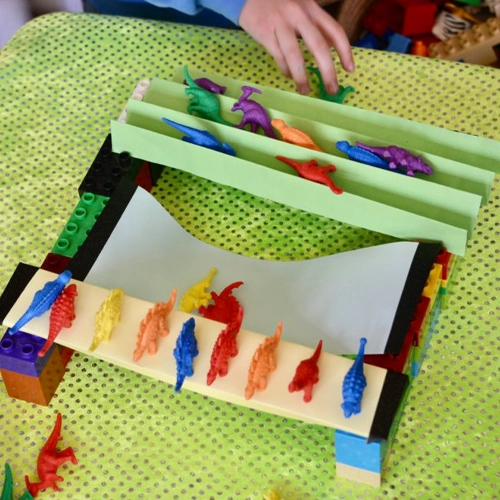
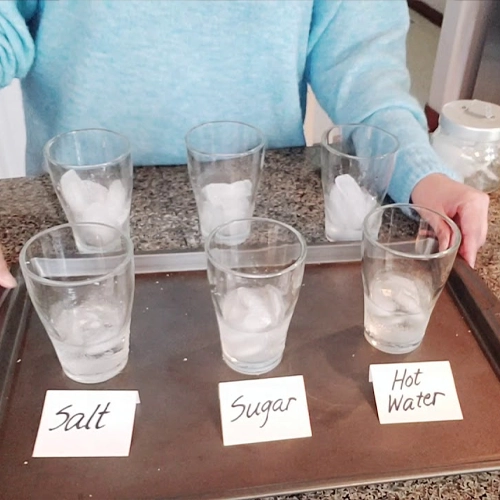
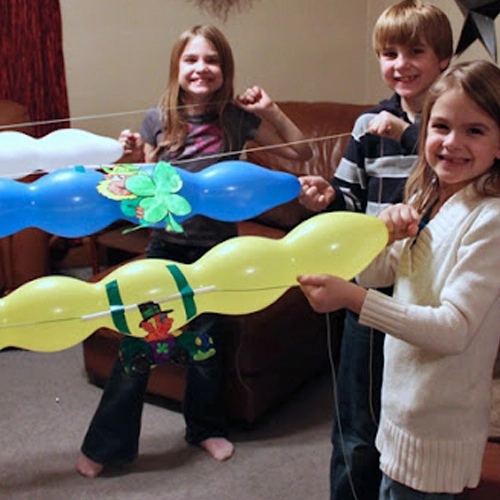
At‑Home STEM Activities for Kids
You don’t need a science lab to do meaningful STEM activities for kids. With just a few everyday materials, kids can build, test, and explore right at the kitchen table or in the living room. These at-home STEM activities are simple to set up, easy to clean up, and packed with learning—perfect for curious toddlers, preschoolers, and elementary kids alike.
Rainbow Walking Water
Age: 3–6
Materials: 6 clear cups, water, paper towels, food coloring (red, yellow, blue)
Fill 3 cups with water and add food coloring—red, yellow, and blue. Arrange the cups in a circle, alternating with 3 empty cups. Connect each cup with a folded paper towel strip. Over time, water “walks” through the paper and mixes in the empty cups, forming new colors. This colorful experiment introduces kids to absorption, color blending, and basic water movement—all with zero mess and lots of “wow!”
DIY Windmill Spinner
Age: 4–8
Materials: cardstock or thick paper, pencil with eraser, push pin or thumbtack, scissors, ruler
Cut a square from cardstock, snip diagonal lines from each corner toward the center, and fold alternate corners inward to form a pinwheel. Secure it to the pencil’s eraser with a tack. Blow on it or take it outside on a breezy day. This simple build teaches kids about wind energy, rotation, and engineering—all with materials found in most homes or classrooms.
Grow a Bean in a Bag
Age: 3–7
Materials: ziplock bag, paper towel, water, dry bean (like a lima bean), tape
Wet a paper towel and place it inside a ziplock bag with a bean on top. Tape the bag to a sunny window. Within days, kids can watch the bean swell, sprout roots, and shoot up a stem. It’s a wonderful way to explore plant life cycles and get kids excited about nature—even from indoors.
Invisible Ink with Lemon Juice
Age: 5–9
Materials: lemon juice, Q-tip, white paper, lamp or hair dryer
Dip a Q-tip into lemon juice and write a message on the paper. Let it dry, then reveal the secret by gently heating the paper with a lamp or blow dryer. The heat oxidizes the lemon juice, making the writing visible. Kids love the mystery, and it’s a clever way to introduce basic chemistry concepts.
Sink or Float Sorting Station
Age: 2–5
Materials: tub or bowl of water, everyday items (sponge, rock, plastic spoon, key, paper clip, rubber duck, etc.)
Gather random household objects and let your child guess whether each one will sink or float. Then test them one by one. This classic sensory science activity helps young children build observation skills and vocabulary while having fun with water play.
Build a Marble Maze with LEGO
Age: 5–9
Materials: LEGO bricks and baseplate, 1 marble or small bead
Create walls and paths on the baseplate to guide the marble from start to finish. Kids can design their own layouts, test them, then tweak and rebuild. It’s an ideal quiet-time STEM challenge that boosts spatial awareness, logical thinking, and creativity—right on the living room floor.
Homemade Butter in a Jar
Age: 4–8
Materials: small jar with lid, heavy cream, marble (optional), crackers for tasting
Pour cream into the jar, add a marble (for agitation), and shake it vigorously for 5–10 minutes. The cream thickens, separates, and becomes soft butter. Spread it on crackers and enjoy! Kids learn about physical change and emulsification—all while using their muscles and patience.
Straw Structures Building Challenge
Age: 5–9
Materials: plastic straws, tape or pipe cleaners, small action figure or toy animal
Challenge your child to build a structure strong enough to hold a small toy figure using only straws and tape. They can experiment with triangles, squares, or any shape they like. It’s a great at-home engineering challenge that develops design thinking, fine motor skills, and perseverance. Plus, no mess—just imagination and lots of creative problem-solving.
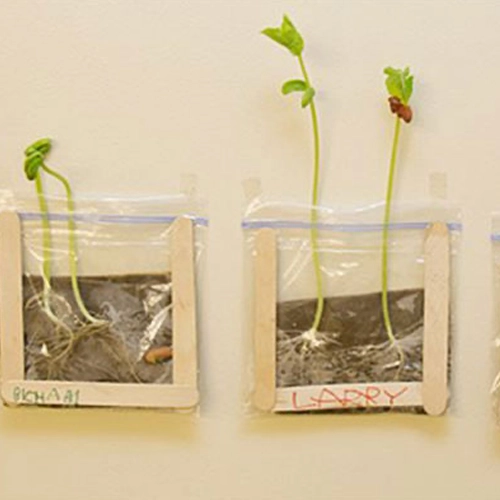
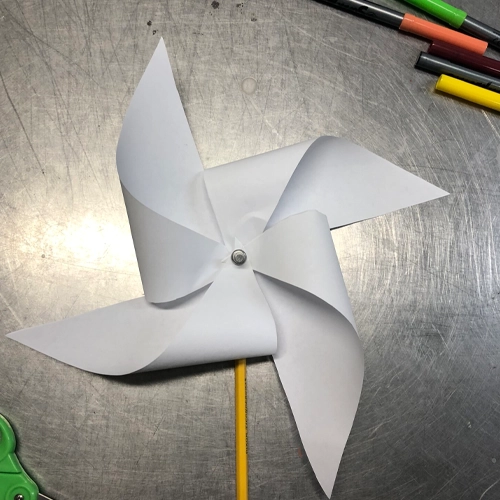
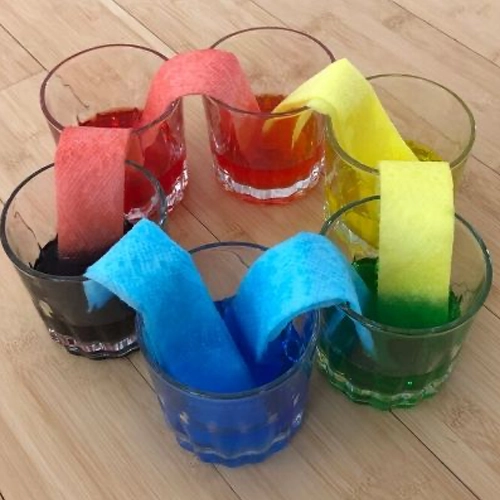
STEM Activities by Season
Each season brings new weather, nature, and experiences—and that means new ways to explore STEM! Whether you’re planting seeds in spring, exploring shadows in summer, collecting leaves in fall, or experimenting with ice in winter, these seasonal STEM activities for kids connect science and play to the world around them. Seasonal themes help children observe, ask questions, and learn in real time—right from their backyard, classroom, or campsite.
Spring STEM Activities for Kids
Spring is full of natural change, which makes it a perfect season for hands-on discovery. From blooming flowers to rainy weather, these STEM activities for kids bring the outdoors in—or take learning outside to explore life cycles, weather, and more. Each project is easy to set up, uses simple materials, and fits beautifully into a spring theme for preschool and early elementary learners.
Rain Gauge Tracker
Age: 4–8
Materials: clear plastic cup or jar, ruler, marker, tape, notebook or printable chart
Use a marker to label centimeter or inch marks on the cup. Set it outside in an open area, and check it after each rain. Kids record the water level over several days and compare results. This is a great way to explore weather patterns, measurement, and simple data collection with just one jar and a ruler.
Seed Germination in a Bag
Age: 3–7
Materials: ziplock bag, wet paper towel, beans or peas, tape
Place the damp paper towel inside the bag with the seed pressed against it. Tape the bag to a sunny window and watch as roots and stems appear over the next few days. A springtime favorite, this activity lets children observe plant growth up close without any mess.
Flower Dissection & Diagram
Age: 5–9
Materials: real flowers (lily or daisy work well), magnifier, tweezers, white paper, glue stick, markers
Carefully take apart a flower and place each piece on paper—petals, stamen, stem. Help children label each part and talk about its role in the plant’s life cycle. This hands-on biology exploration is perfect for connecting nature and science in a meaningful way.
Water Transport with Celery
Age: 4–8
Materials: celery stalks with leaves, clear cups, food coloring, water
Fill cups with water and add food coloring. Place celery in the cups and observe over several hours. The color slowly moves up the stalk and into the leaves, showing how plants absorb water. A classic spring science project that’s colorful, visual, and always gets kids talking.
Butterfly Symmetry Painting
Age: 2–5
Materials: construction paper, paint, paintbrushes
Fold a piece of paper in half, open it, and have children paint on one side. Fold it again and press gently. Open to reveal a perfectly symmetrical butterfly shape. It’s a creative STEM art project that explores symmetry and pattern recognition—perfect for little learners during spring.
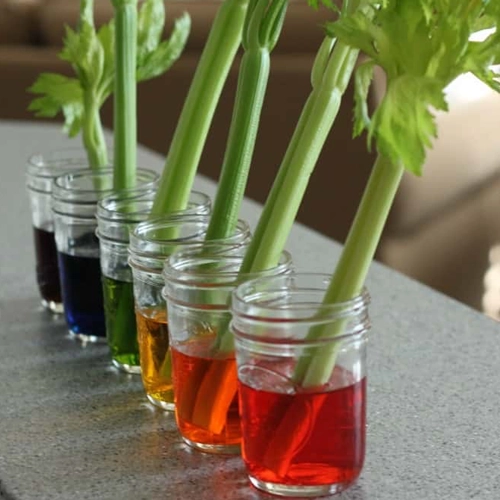
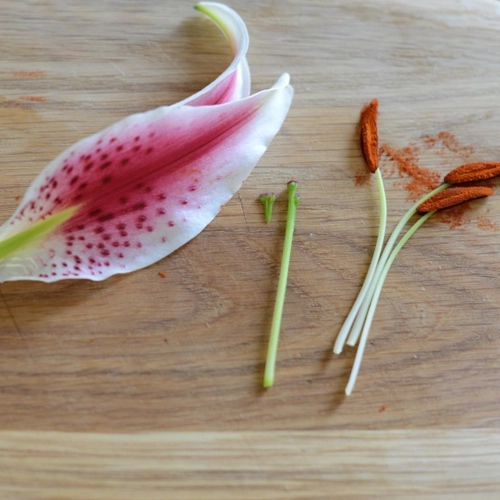
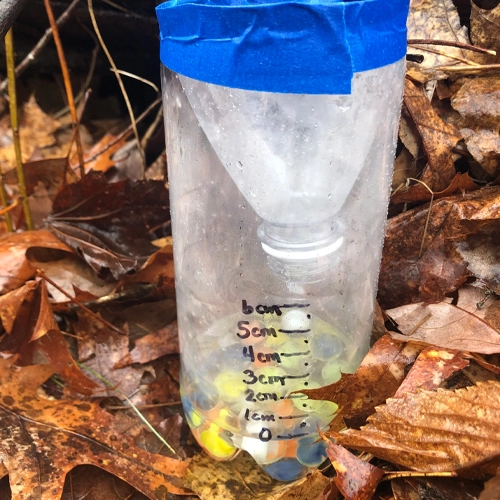
Summer STEM Activities for Kids
Summer is messy, sunny, and full of energy—just like the best science projects. These STEM activities for kids take advantage of warm weather, water play, and outdoor time. They’re simple, open-ended, and perfect for curious hands that like to build, splash, and explore.
DIY Solar Oven S’mores
Age: 6–9
Materials: pizza box, aluminum foil, black paper, plastic wrap, tape, marshmallows, graham crackers, chocolate
Take a sunny afternoon and turn it into a science snack session. Line the inside of a pizza box with foil and black paper. Set up your s’mores, cover with plastic wrap, and angle the lid to reflect the sun’s heat. After 15–30 minutes, gooey marshmallows and melted chocolate await. Kids learn about solar energy, heat absorption, and patience—all while making their own treat.
Sponge Tower Water Race
Age: 3–6
Materials: kitchen sponges, buckets or bowls, water
Cut sponges into squares and stack them into towers. Place one end in a water bucket and time how long it takes to fully absorb water and fall over. Kids love the drama of the “sponge crash,” and it sneakily teaches about absorption, gravity, and timing.
Ice Cube Melt Maze
Age: 4–7
Materials: ice cubes, tray with edges, foil, blocks or small toys to make maze walls
Create a simple maze on a tray using foil or small toys. Let the ice cube travel from one end to the other, pushed only by melting and tilting the tray. Kids can try adding salt or using droppers of warm water to guide their ice cube. A cool, hands-on experiment in problem-solving and states of matter.
Nature Sound Mapping Walk
Age: 5–9
Materials: clipboard, paper, pencil, backyard or park
Head outdoors and listen. Every time your child hears a bird, insect, wind, or splash, they draw a symbol or mark it on a “sound map.” This surprisingly calming STEM activity builds observation skills, environmental awareness, and spatial thinking—all through listening.
Pool Noodle Engineering
Age: 4–8
Materials: pool noodles, skewers or sticks, scissors, tape, marbles or small balls
Cut pool noodles into sections and let kids design ball runs, ramps, or bridges. You can use them on stairs, tables, or in the yard. They’ll test gravity, angles, and structural strength while having a blast. No pool needed—just creativity and noodle power!
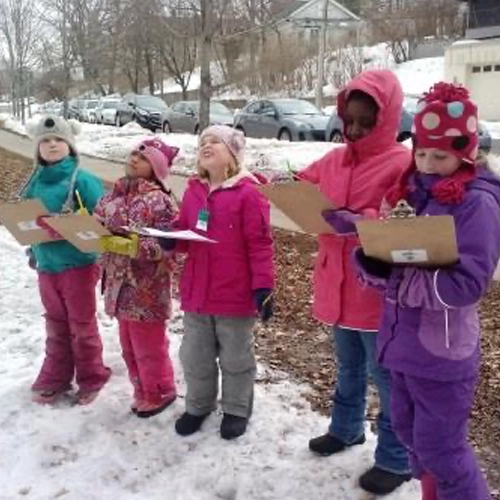
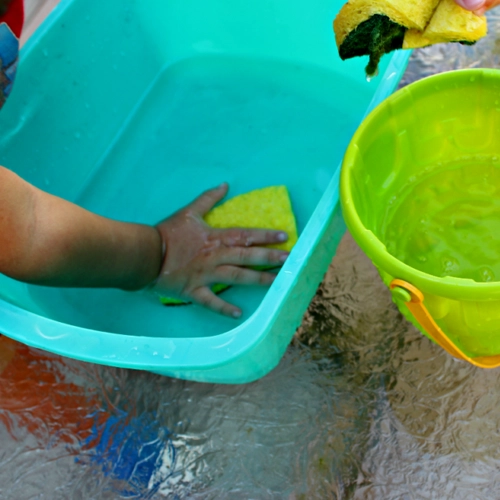
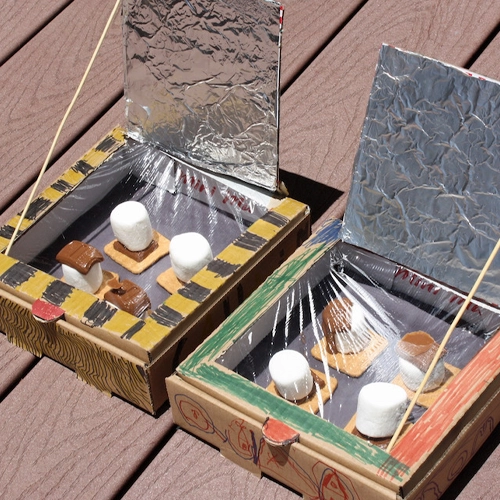
Fall STEM Activities for Kids
Fall offers colorful leaves, pumpkins, and changing weather—perfect for seasonal discovery. These STEM activities for kids help children connect with nature while exploring science, engineering, and observation skills.
Leaf Color Chromatography
Age: 5–9
Materials: fresh leaves, rubbing alcohol, glass jar, coffee filter, hot water, spoon
Chop the leaves and place them into the jar with rubbing alcohol. Mash them a little with a spoon. Set the jar in warm water (in a bowl or zip bag) for 30 minutes. Then insert a coffee filter strip into the liquid. Over time, you’ll see different pigments rising on the filter, revealing the colors hiding inside green leaves. It’s a brilliant way to explain why leaves change color in fall.
Apple Stack Engineering Challenge
Age: 3–6
Materials: apples, knife (for adults), toothpicks, tray
Slice apples into flat discs and challenge kids to stack and connect them using toothpicks. They can build towers, bridges, or try balancing objects on top. It’s a simple introduction to balance, structure, and spatial reasoning—using one of fall’s most iconic fruits.
Pumpkin Sink or Float
Age: 2–5
Materials: small pumpkin, tub of water, towel
Ask children to guess: Will the pumpkin sink or float? Then test it in water. Repeat with different sizes or even a hollowed-out pumpkin. This sensory-friendly STEM activity encourages prediction, hands-on testing, and introduces buoyancy in a memorable way.
Acorn Catapult Build
Age: 5–9
Materials: popsicle sticks, rubber bands, plastic spoon, tape, acorns
Use sticks and rubber bands to build a simple catapult. Load an acorn into the spoon and launch it. Try adjusting the lever or angle to change how far it goes. It’s a fun way to explore force and motion while using natural materials found in your backyard or park.
Measuring Leaves Activity
Age: 3–7
Materials: leaves of various sizes, ruler, string, tape
Gather leaves of different sizes and shapes. Let kids measure their length, width, or even perimeter using a string and a ruler. Record the data or sort them by size. This introduces measurement, comparison, and basic math through nature exploration.
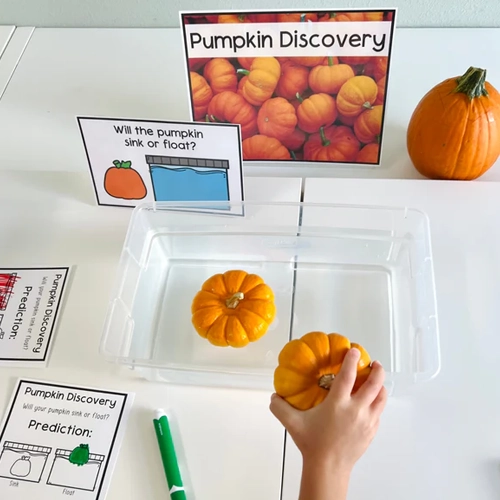
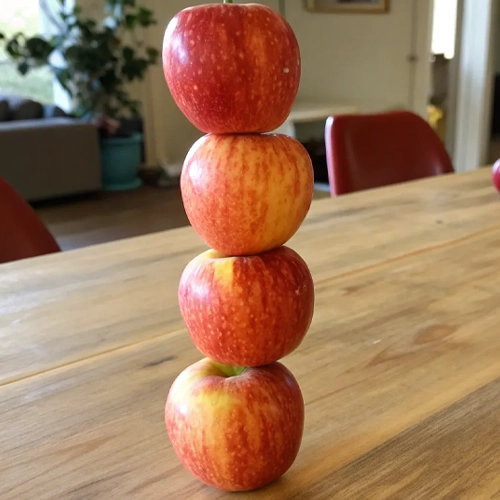
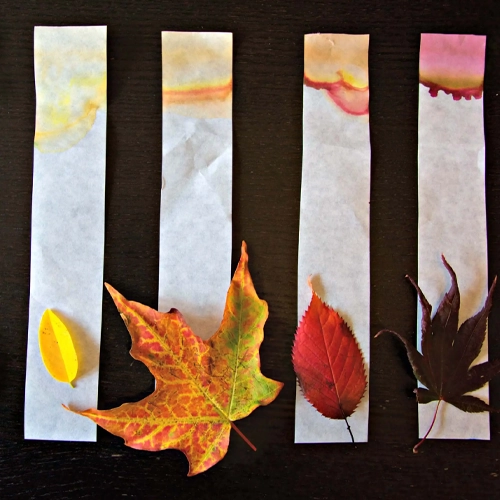
Winter STEM Activities for Kids
Winter’s cold temperatures, ice, and seasonal celebrations offer plenty of STEM inspiration. These STEM activities for kids blend seasonal themes with science, engineering, and sensory fun—ideal for indoor learning during chilly days.
Snowstorm in a Jar
Age: 3–6
Materials: clear jar, baby oil, white paint, Alka-Seltzer, water, glitter (optional)
Fill the jar mostly with baby oil. In a separate cup, mix white paint with water, then pour it slowly into the jar. Add glitter if you like. Finally, drop in half an Alka-Seltzer tablet and watch the swirling snowstorm appear. A winter-themed chemical reaction that’s calm and mesmerizing.
Ice Tower Building
Age: 4–8
Materials: ice cubes, salt, tray, tongs
Give kids a pile of ice cubes and let them try to stack them into a tower. It’s slippery and hard at first—until they discover that a pinch of salt melts the ice slightly and refreezes it into a solid bond. This experiment explores freezing, melting, and physical change while encouraging persistence and problem-solving.
Snowflake Symmetry Art
Age: 3–6
Materials: paper, scissors, markers or crayons
Fold paper and cut shapes to make paper snowflakes. Then unfold and decorate each side to highlight symmetry. Kids explore patterns, bilateral symmetry, and fine motor skills in a calm, wintery activity that doubles as decoration.
Frozen Bubbles Experiment
Age: 5–9
Materials: bubble solution, straw or wand, freezer or cold outdoor temps
Blow bubbles outside or into a freezer-safe container. In cold weather, bubbles can freeze and create beautiful icy patterns. This activity explores freezing points, air temperature, and surface tension—and it looks magical when captured in photos.
Gingerbread House Structural Test
Age: 5–9
Materials: graham crackers, icing, candy, plates, toothpicks (optional)
Let kids build gingerbread-style houses with crackers and icing. Then test them: can they withstand a “snowstorm” (fan or blower)? Or support a “roof”? Turn a holiday tradition into an engineering design challenge by asking kids to plan, test, and rebuild.
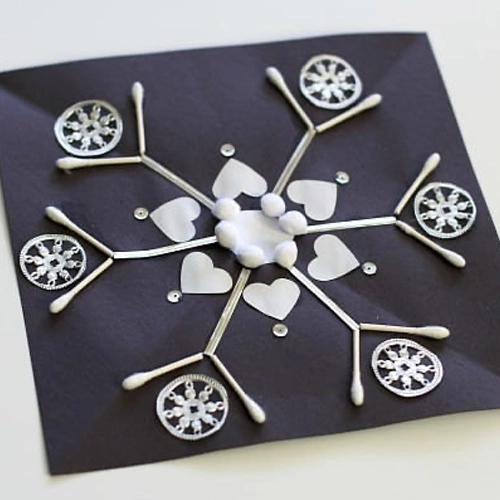
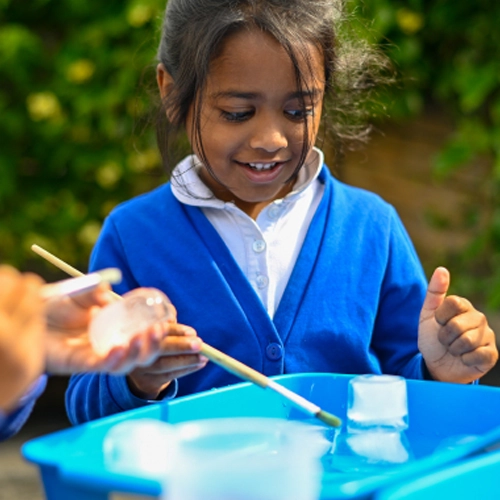
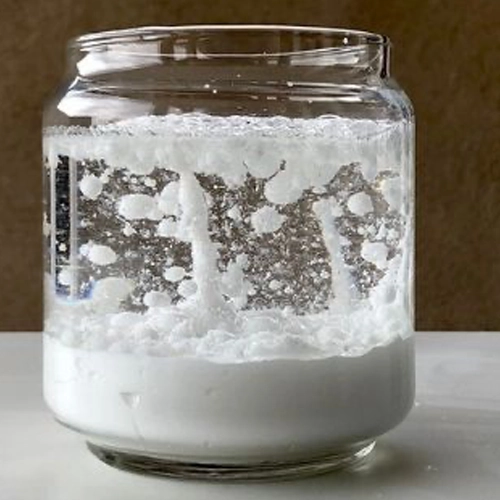
Holiday-Themed STEM Activities for Kids
Holidays and special events are the perfect excuse to add some extra sparkle—and learning—to your child’s routine. These STEM activities for kids are built around seasonal celebrations like Halloween, Christmas, Earth Day, and more. With themed materials and playful challenges, they turn classroom parties or family days into creative learning opportunities. Whether you’re carving pumpkins or dyeing Easter eggs, there’s always a chance to mix science, math, and hands-on fun.
Halloween STEM Activities for Kids
Halloween is full of spooky fun—and science! From bubbling potions to flying bats, this is the perfect holiday to mix imagination with learning. These Halloween STEM activities for kids add a little “mad scientist” energy to your October while teaching real-world concepts like motion, chemistry, and problem-solving.
Pumpkin Volcano Eruption
Age: 3–7
Materials: small pumpkin, baking soda, vinegar, dish soap, food coloring, tray or plate
Carve out a mini pumpkin and scoop out the inside. Fill it halfway with baking soda, add a squirt of dish soap, and a few drops of food coloring. Pour in vinegar and watch the bubbling eruption! This Halloween twist on the classic baking soda volcano lets kids explore chemical reactions in a festive way.
Flying Bat Zip Line
Age: 4–9
Materials: plastic bat toy or paper bat cutout, string, straw, tape, paperclip
Attach a string across a room like a zip line. Tape a straw to the back of the bat and thread it onto the string. Clip a paperclip to give it weight, then tilt the string and let it fly! Kids learn about gravity, incline, and friction while sending their bat soaring through the “haunted air.”
Candy Corn Tower Challenge
Age: 5–8
Materials: candy corn, toothpicks, plate or tray
Using candy corn as connectors and toothpicks as beams, kids try to build the tallest freestanding tower. The sweet shapes add a tricky twist, requiring patience, fine motor skills, and a strong base. A great way to explore structural engineering with seasonal flair.
Ghost Balloon Static Test
Age: 3–6
Materials: white balloon, tissue paper, marker, wool cloth or hair
Draw a ghost face on a white balloon and cut small tissue paper ghosts to lay on a flat surface. Rub the balloon on your hair or a wool cloth and hold it near the ghosts—watch them “rise”! This fun activity introduces static electricity and how charged particles can move lightweight objects.
Glow-in-the-Dark Slime
Age: 4–9
Materials: clear glue, liquid starch or saline solution, glow-in-the-dark paint or powder, mixing bowl, spoon
Mix glue and glow pigment in a bowl, slowly add activator (starch or saline) until the slime forms. Turn off the lights and let it glow! This tactile Halloween favorite is perfect for talking about polymers and chemical bonding—with a ghoulish twist.
Spider Web Bridge Test
Age: 5–9
Materials: masking tape, small plastic spiders or toy bugs, paper strips, ruler
Create a “spider web” between two chairs using masking tape. Kids design bridges or ladders out of paper strips and test how many spiders each one can hold before collapsing. A spooky-themed engineering challenge that focuses on weight distribution and creativity.
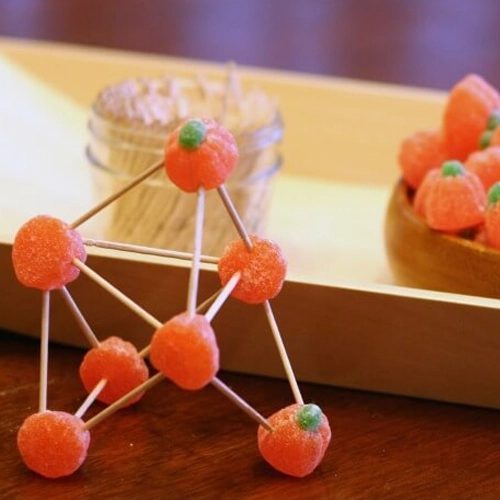
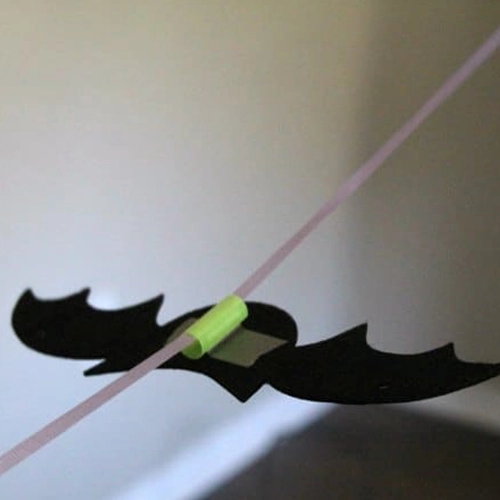
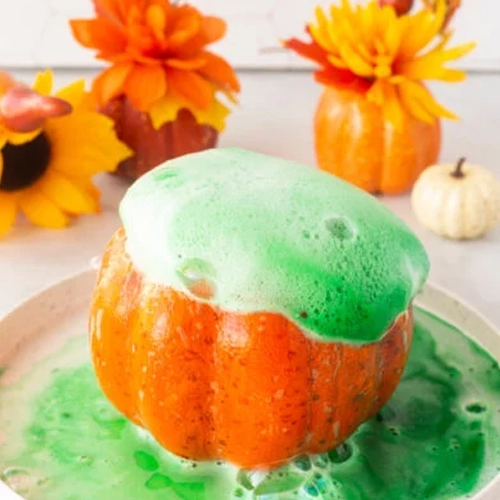
Thanksgiving STEM Activities for Kids
Thanksgiving is more than food and family—it’s also a time to explore gratitude, nature, and hands-on creativity. These Thanksgiving STEM activities for kids bring science and engineering to the table (sometimes literally), using festive themes like turkeys, cranberries, and harvest time to spark curiosity.
Build a Turkey Hideout
Age: 5–9
Materials: craft sticks, clothespins, cardboard scraps, tape, feathers, toy turkey or paper cutout
Challenge kids to design a small “hideout” to help a turkey escape being found before Thanksgiving dinner. Using loose parts and recycled materials, they build structures that must hide the turkey completely while staying upright. It’s a great introduction to creative design thinking and problem-solving.
Cranberry Float or Sink Test
Age: 3–6
Materials: fresh cranberries, dried cranberries, a large bowl of water, a spoon
Let kids test which cranberries float and which sink—and why! Fresh cranberries often float due to internal air pockets, while dried ones sink. Let them record results, stir, and scoop. This simple experiment helps children explore density and buoyancy with a seasonal ingredient.
Marshmallow Corn Catapults
Age: 4–8
Materials: plastic spoons, popsicle sticks, rubber bands, mini marshmallows, candy corn
Kids build mini catapults using spoons and sticks, then launch “corn kernels” (aka marshmallows or candy corn) into a paper cup target. Adjust angle, tension, and weight to test what launches farthest. A festive intro to potential and kinetic energy that feels more like a game than a lesson.
Pumpkin Pie Ingredient Science
Age: 6–9
Materials: canned pumpkin, spices (cinnamon, nutmeg), milk, sugar, mixing bowls, measuring spoons
Turn pumpkin pie making into a STEM session: let kids measure ingredients, guess proportions, and experiment with spice ratios. Optional: bake a mini pie or do a no-bake version in ramekins. This activity includes chemistry, measurement, and sensory exploration all in one.
Thankful Feather Coding Game
Age: 4–7
Materials: colored paper feathers, symbols or arrows, tape, toy figure, floor space
Make paper feathers with simple directional codes (← ↑ ↓ →). Create a path on the floor and let kids “program” a character to move through the feathers to reach a “gratitude basket.” They practice sequencing, direction-following, and the early logic skills of coding—Thanksgiving style.
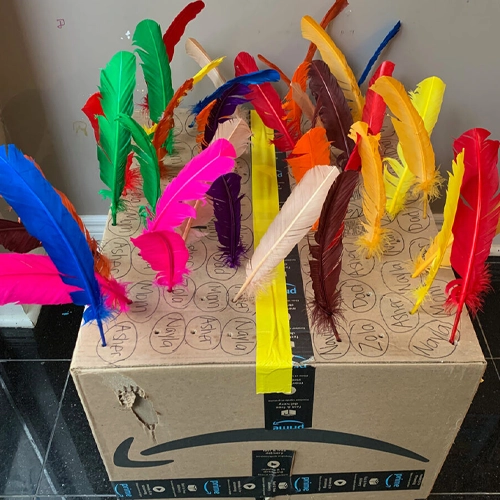
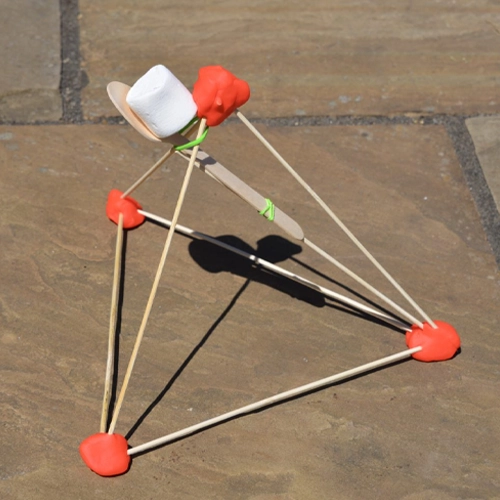
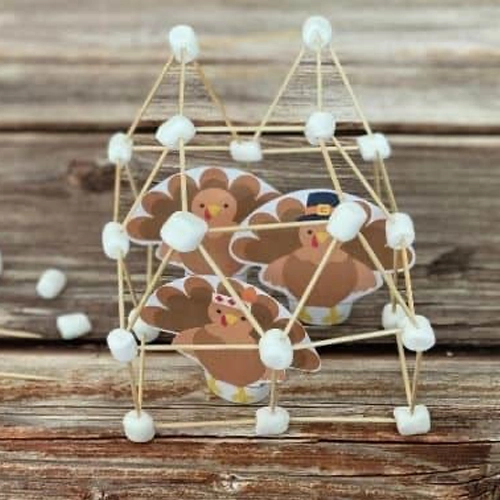
Christmas STEM Activities for Kids
The holiday season is filled with lights, colors, and cozy traditions—perfect for hands-on science and playful learning. These Christmas STEM activities for kids turn the excitement of the holidays into fun opportunities to build, test, and create. Whether indoors or outside, these challenges make December both magical and meaningful.
Gumdrop Engineering Challenge
Age: 4–8
Materials: gumdrops, toothpicks, tray or plate
Give kids a pile of gumdrops and toothpicks and ask them to build the tallest tree, strongest bridge, or even a star! This activity encourages structural thinking, symmetry, and creativity—plus, it’s festive and sticky fun.
Melting Snowman Science
Age: 3–6
Materials: baking soda, water, dish soap, vinegar, glitter (optional), small buttons or eyes
Mix baking soda, water, and a bit of soap to form “snowman dough.” Shape small snowmen and decorate them. When kids are ready, pour vinegar over the snowmen and watch them fizz and melt. This simple acid-base reaction is always a crowd-pleaser and fits the winter theme perfectly.
Christmas Light Circuit Craft
Age: 6–9
Materials: LED lights, coin batteries, copper tape, paper, tape, scissors
Create a simple light-up Christmas card or ornament by connecting a battery to an LED with copper tape. Kids can decorate around it with drawings or glitter. It’s an intro to basic circuitry, holiday-style!
Santa’s Chimney Drop Test
Age: 4–7
Materials: cotton balls, paper tubes, measuring tape, stopwatch
Build a pretend “chimney” from a cardboard tube. Let kids drop “Santa” (cotton balls) from different heights and measure how long it takes to reach the bottom. Try wrapping some in foil or cloth to see how material changes affect speed. A playful way to explore gravity, air resistance, and testing variables.
Elf Zip Line Challenge
Age: 5–9
Materials: toy elf or paper elf, string, paperclip, straw, tape
Just like the Halloween bat zip line—but this time with an elf! Kids create a festive zip line across the room and adjust height, angle, and materials to get their elf moving as smoothly (or fast!) as possible. A seasonal twist on an engineering classic.
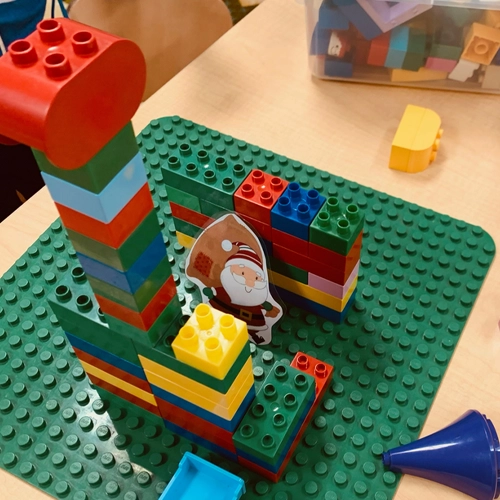
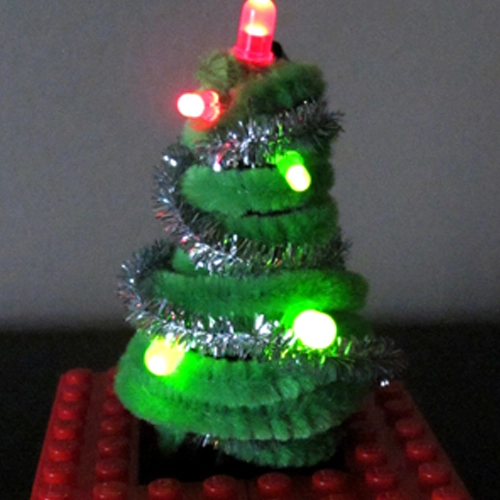
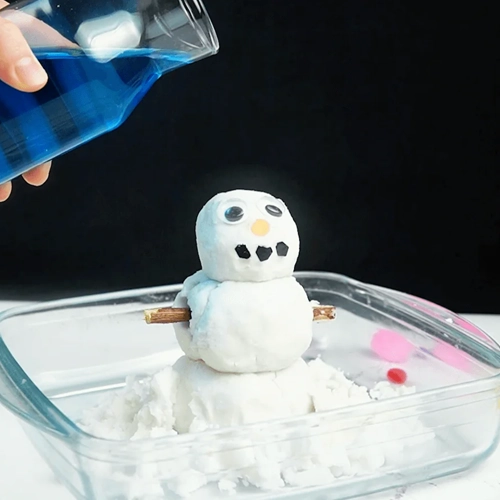
Easter STEM Activities for Kids
Easter brings bright colors, eggs, and endless spring inspiration—making it a perfect time for hands-on STEM learning. These Easter STEM activities for kids use familiar holiday items like plastic eggs, jelly beans, and baskets to spark curiosity and creativity. Simple to set up and packed with playful learning!
Plastic Egg Drop Challenge
Age: 5–9
Materials: plastic eggs, cotton balls, tissue, rubber bands, paper scraps, tape
Challenge kids to protect a plastic egg from a high drop using only the provided materials. They build a small “egg protection system,” drop it from shoulder height (or higher), and check if it stayed intact. A festive twist on classic egg drop engineering, teaching impact absorption and design planning.
Jelly Bean Tower Build
Age: 4–8
Materials: jelly beans, toothpicks, plate or tray
Let kids construct towers, domes, or shapes using jelly beans as connectors and toothpicks as beams. The squishiness adds extra challenge, and the results are colorful and fun. This activity supports fine motor development, spatial awareness, and problem-solving.
Bouncing Egg Chemistry
Age: 6–9
Materials: raw egg, vinegar, clear jar or cup
Place a raw egg in a cup of vinegar for 24–48 hours. The vinegar dissolves the shell, leaving behind a soft, rubbery membrane. Kids can gently bounce the egg and observe how the chemical reaction (acetic acid + calcium carbonate) works. It’s messy, amazing, and unforgettable!
Easter Basket Pulley System
Age: 5–9
Materials: small basket, string, spool or hanger, toys or candy for weight
Use a string and a simple pulley (like a curtain rod, hanger, or banister) to lift an Easter basket from the floor. Kids fill the basket with different weights and observe how pulley mechanics make lifting easier. Great intro to force, motion, and mechanical advantage—plus, it feels like holiday magic.
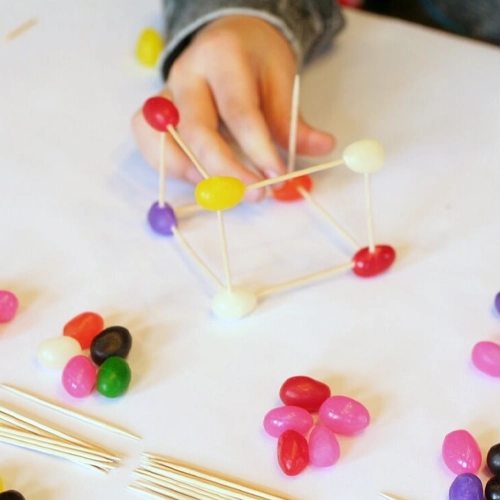
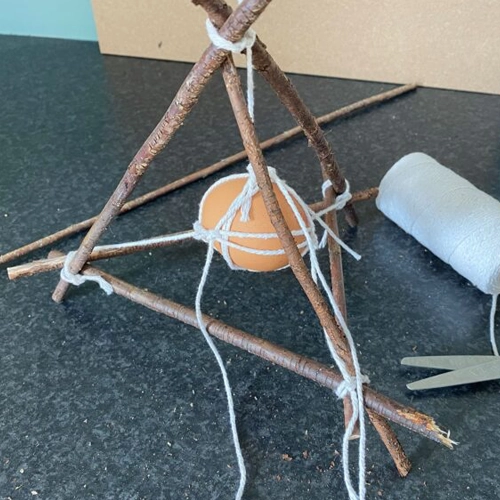
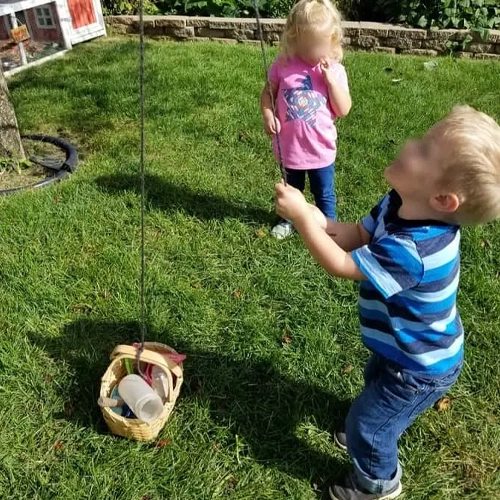
Earth Day STEM Activities for Kids
Earth Day is the perfect time to help kids understand how they can care for the planet. These STEM activities for kids explore recycling, water filtration, and environmental awareness in fun, hands-on ways that leave a lasting impression.
Water Filtration Experiment
Age: 6–9
Materials: plastic bottles (cut in half), coffee filters, cotton balls, sand, gravel, dirty water
Kids build a working water filter using layers of cotton, sand, and gravel. They pour dirty water through and observe the filtration process. This simple but powerful experiment teaches about water conservation, pollution, and the science of purification.
Recycled Paper Making
Age: 5–8
Materials: old newspapers, blender, water, screen or mesh, towel
Shred paper and soak it in water, then blend it into pulp. Pour the pulp onto a screen and press it flat with a towel. Let it dry, and you have recycled paper! Kids learn how paper can be reused instead of thrown away—while exploring textures, absorption, and sustainability.
Trash Sorting STEM Game
Age: 3–7
Materials: printable icons or real cleaned waste, four labeled bins: Trash, Recycle, Compost, Reuse
Let kids sort common items (or pictures) into the correct bins. Ask them to explain their choices. This interactive activity builds classification skills and sparks conversations about waste management in a very approachable way.
Greenhouse in a Cup
Age: 4–7
Materials: clear plastic cups with lids or plastic wrap, soil, seeds, water
Kids plant seeds in cups and cover them to create mini greenhouses. Place them in a sunny spot and track growth. This activity connects Earth Day with plant science, life cycles, and how a greenhouse protects and accelerates natural processes.
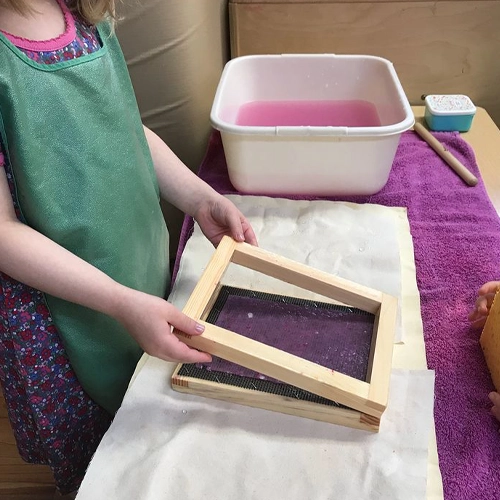
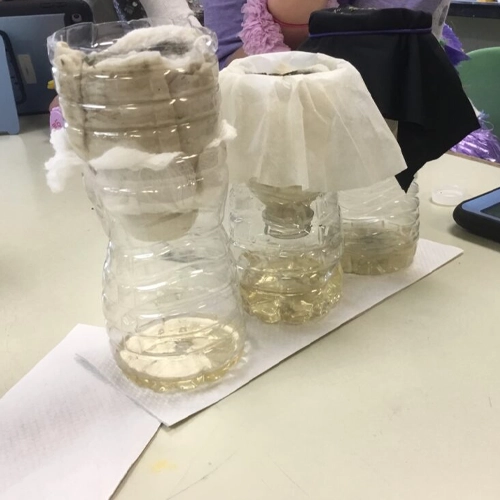
Outdoor STEM Activities for Kids
Getting outside is one of the best ways for children to learn about science and the world around them. These STEM activities for kids encourage exploration, observation, and creativity—all while enjoying fresh air and natural spaces. Whether you’re in the backyard, park, or schoolyard, these hands-on projects turn the outdoors into a living classroom.
Nature Shadow Tracing
Age: 3–6
Materials: toys, chalk or paper, pencil, sunny outdoor space
Place toys or objects on a hard surface under the sun and trace their shadows with chalk or pencil. Come back at different times of the day to trace again and see how shadows move. This simple activity helps children understand how the Earth’s rotation affects light and shadow—using only sunshine and curiosity.
Wind-Powered Pinwheel Test
Age: 5–9
Materials: pinwheel (store-bought or DIY), notebook, stopwatch, different wind sources (fan, blowing, natural wind)
Take your pinwheel outside and test how different wind sources affect its spinning. Try holding it higher, lower, or at different angles. Let kids record their observations. This introduces wind energy and basic aerodynamics in a fun, highly visual way.
Bug Counting & Habitat Mapping
Age: 4–8
Materials: clipboard, paper, markers, magnifying glass
In a garden or yard, ask kids to find and count bugs—ants, beetles, butterflies. Have them draw where each bug was found (on a rock, under a log, in a flower). This combines ecology, data collection, and spatial awareness while developing empathy for small creatures.
DIY Windmill Build
Age: 6–9
Materials: paper, straws, pins, cardboard, scissors, tape
Let kids build their own windmill or wind turbine using household materials. Take it outside and test how it spins in real wind or under different conditions. A wonderful mix of engineering and renewable energy concepts—plus, it’s creative and customizable.
Nature Boat Float Challenge
Age: 5–9
Materials: sticks, leaves, bark, string, shallow water (stream, tub, pond)
Challenge kids to build a small boat from only natural materials and test how well it floats. They can redesign based on performance. This activity supports engineering, buoyancy concepts, and connection with natural materials—all through outdoor play.
Outdoor Sound Hunt
Age: 3–7
Materials: quiet space, clipboard, paper, crayons
Sit quietly outside and listen. Have kids draw or mark each sound they hear—birdsong, rustling leaves, footsteps, distant cars. It sharpens auditory observation and encourages calm, focused attention while reinforcing how science involves all our senses.
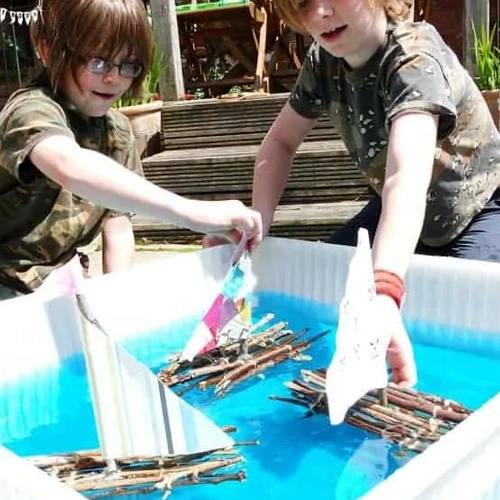
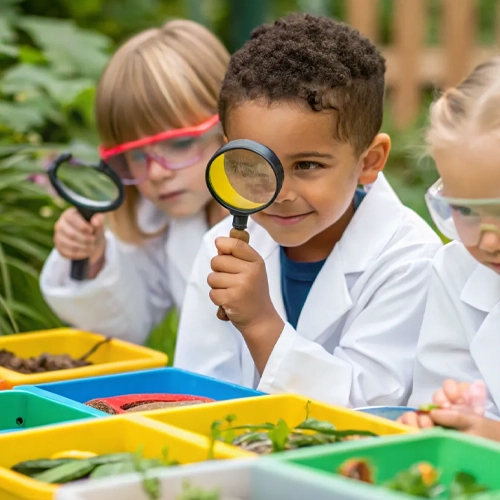
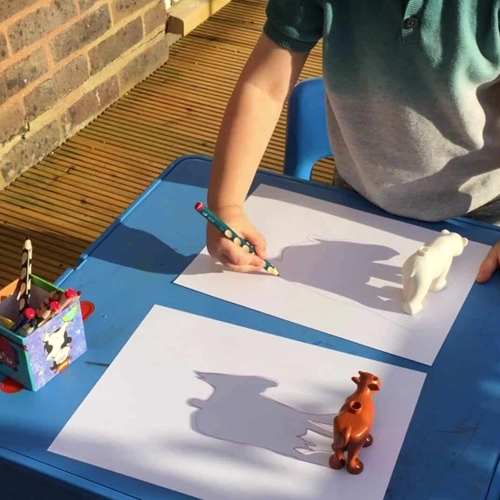
STEM Activities by Theme
Some kids love building, others are fascinated by space or animals—and that’s exactly why themed learning works so well. These STEM activities for kids are organized by theme, helping you tap into what excites your child most. From LEGO structures to food-based experiments and flying catapults, every project brings STEM concepts to life through real-world connections and hands-on fun.
LEGO STEM Activities for Kids
LEGO is more than just a toy—it’s one of the best tools for introducing engineering, math, and creative problem-solving. These LEGO STEM activities for kids are designed to stretch their thinking while they build, test, and experiment using the colorful bricks they already love.
LEGO Bridge Strength Test
Age: 5–9
Materials: LEGO bricks, books (for support), small weights (coins, washers, toy cars)
Challenge kids to build a LEGO bridge between two books and see how much weight it can hold before collapsing. Encourage them to test different shapes (arches, beams) and rebuild stronger each time. This classic activity teaches about structure, balance, and load distribution.
Balloon-Powered LEGO Car
Age: 6–9
Materials: LEGO wheels and base, balloon, straw, tape
Kids design a LEGO car that moves using the power of air! Tape a balloon onto a straw, secure the straw to the LEGO car, blow up the balloon, and let it go. A perfect intro to force, motion, and simple propulsion—all with familiar pieces.
LEGO Marble Maze
Age: 4–7
Materials: LEGO baseplate, bricks, marble
Let kids build their own marble maze using LEGO bricks. Start simple and make it harder by adding turns, ramps, or dead ends. This activity builds spatial reasoning, sequencing, and patience—while sneaking in logic and design thinking.
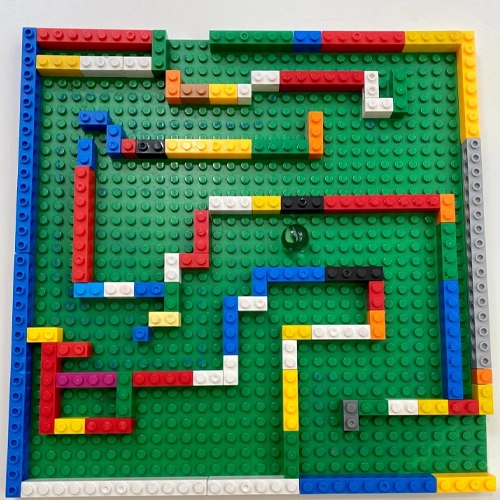
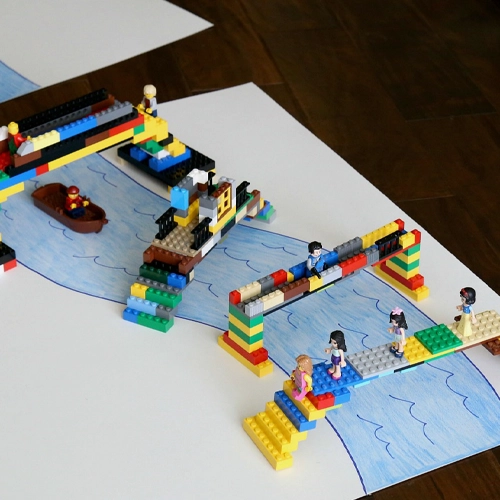
STEM Food Activities for Kids
Food is one of the most accessible—and fun—ways to teach science, math, and engineering. These STEM food activities for kids turn your kitchen into a lab, encouraging creativity while exploring textures, temperature, chemistry, and even design.
Edible DNA Model
Age: 6–9
Materials: licorice sticks (for the backbone), mini marshmallows (for base pairs), toothpicks
Kids construct a double helix DNA model using candy! Licorice sticks act as the sides of the ladder, and toothpicks connect marshmallows representing the base pairs (A–T, C–G). It’s a deliciously hands-on way to introduce basic genetics, molecular structure, and pattern matching.
Baking Soda Pancake Puff
Age: 4–7
Materials: pancake mix, baking soda, vinegar, griddle or pan
Before cooking pancakes, let kids experiment with small amounts of baking soda and vinegar in the batter. Watch how the chemical reaction causes bubbling and puffing. It’s a tasty intro to acids, bases, and gas release—all while making breakfast!
Chocolate Melting Race
Age: 3–6
Materials: chocolate chips or small bars, plates, sunlight, a warm water bowl, and hand warmth
Place chocolate pieces under different heat sources: sunlight, warm water, or in your hands. Ask kids which melts faster and why. A simple way to learn about heat transfer, states of matter, and temperature—without any complicated setup.
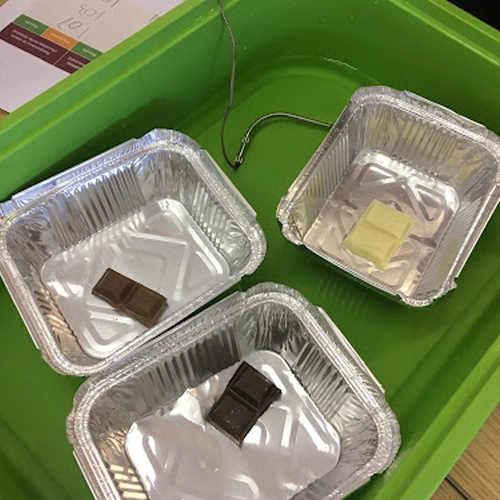
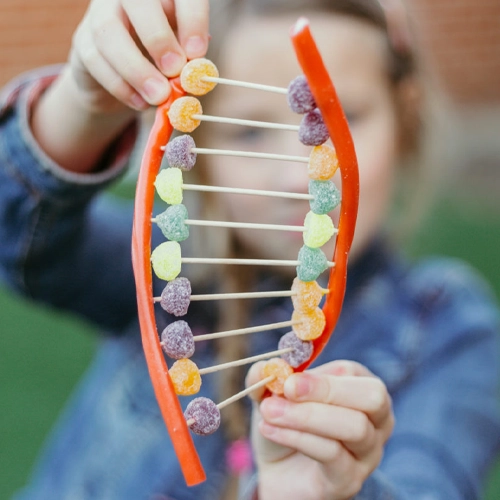
Space STEM Activities for Kids
The universe is full of mysteries waiting to be explored—and kids love to imagine what’s out there. These space-themed STEM activities for kids bring galaxies, gravity, and alien adventures into the classroom or backyard. Perfect for curious minds ready to blast off into learning.
Moon Dust Sensory Science
Age: 3–6
Materials: flour, baby oil, glitter (optional), tray, scoops, toy astronauts
Mix flour with a bit of baby oil to create a soft, moldable texture—your own “moon dust”! Add glitter for sparkle. Let kids scoop, press, and bury space toys. Great for sensory play and discussing the moon’s surface texture, craters, and astronaut tools.
Orbit Spinner with Marbles
Age: 5–8
Materials: paper plate, markers, tape, marbles, scissors
Cut a circular track into a paper plate and decorate it like the sun and planets. Tape the edge so it tilts slightly and roll marbles inside. Watch as they spin in “orbit.” This hands-on model helps explain centripetal force and how planets stay in motion around the sun.
Design an Alien Habitat
Age: 6–9
Materials: cardboard box, construction paper, pipe cleaners, foil, glue, markers
Ask kids: What would a creature from another planet need to survive? Using craft supplies, they build a miniature alien world—considering gravity, temperature, atmosphere, and shelter. This imaginative STEM challenge blends biology, space science, and engineering design.
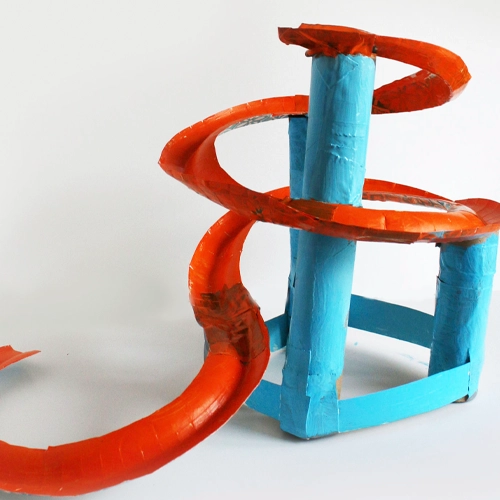
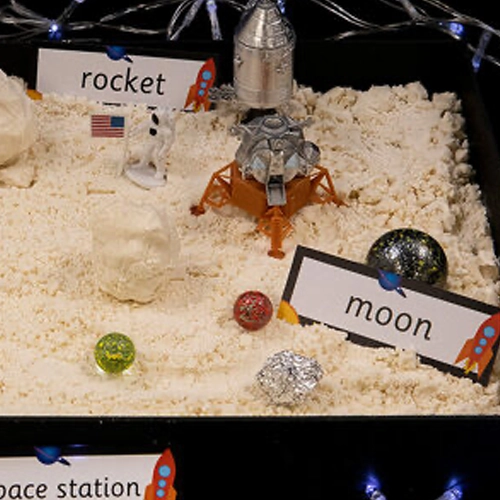
Bird & Plant STEM Activities for Kids
Nature offers endless learning opportunities, especially when it comes to birds and plants. These STEM activities for kids focus on how things grow, fly, and interact with the environment—encouraging kids to think like little biologists, engineers, and observers of the world around them.
Bird Beak Adaptation Challenge
Age: 5–9
Materials: tweezers, spoons, clothespins, chopsticks, small food items (beans, pasta, seeds), bowls
Kids try different “beak tools” to pick up various foods—mimicking how bird beaks are adapted to their diets. Which tool works best for seeds? For worms? This activity teaches natural selection, adaptation, and the relationship between form and function.
Leaf Vein Painting & Observation
Age: 4–7
Materials: fresh leaves, white paper, crayons or paint, magnifying glass
Kids collect leaves and gently press or paint them to create prints showing vein structures. Then, use a magnifier to observe real vein patterns and compare them. A gentle, creative way to explore plant biology, vascular systems, and symmetry in nature.
Seed Dispersal Simulation
Age: 5–8
Materials: paper, glue, string, cotton balls, straws, a fan or a wind source
Create paper models of different seed types: floating (dandelion), sticking (burdock), flying (maple). Drop or blow them using a fan and observe how they travel. This introduces plant reproduction and how seeds are adapted to spread in different environments.
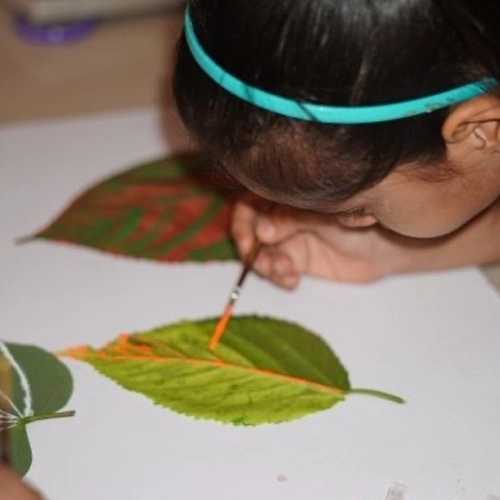
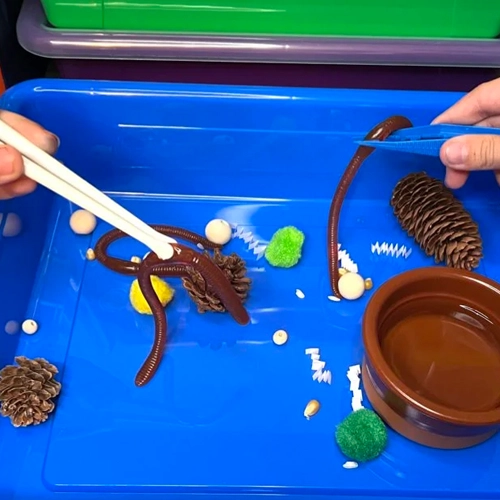
Catapult & Windmill STEM Activities for Kids
From launching objects to harnessing the wind, these STEM activities for kids explore motion, energy, and simple machines. Perfect for active learners who love to build and test what they’ve made, these projects teach core physics principles in exciting, hands-on ways.
Mini Spoon Catapult Launch
Age: 5–8
Materials: plastic spoon, rubber bands, popsicle sticks, pom-poms, tape
Kids build a handheld catapult using simple materials. Secure the spoon with rubber bands between stacked sticks, then launch pom-poms and measure the distance. They can adjust the design to change force and angle—great for learning about tension, energy transfer, and trajectory.
Pinwheel Wind Direction Tracker
Age: 4–7
Materials: paper, pencil, pin, straw, tape, weather vane or compass (optional)
Kids build a pinwheel and take it outside to see which direction the wind is blowing. They can track changes over the day and mark wind direction on paper. This introduces natural weather patterns, data collection, and simple aerodynamic design.
Vertical Windmill Lift Test
Age: 6–9
Materials: cardboard, skewer, paper blades, string, small weights (paper clips or beads)
Construct a vertical windmill where turning blades wind up a string and lift a small weight. Kids observe how blade shape, size, and angle affect movement. This real-world engineering challenge mimics early wind-powered lifting machines and introduces concepts of energy conversion.
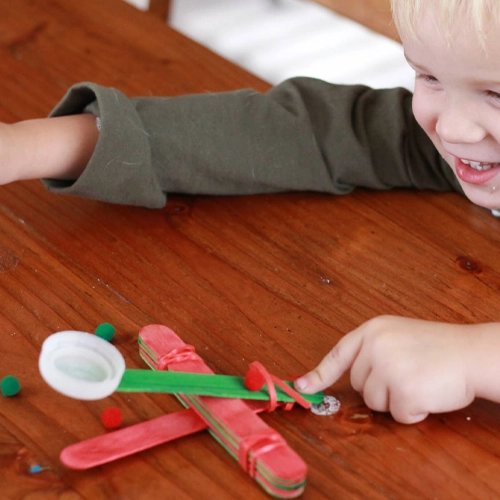
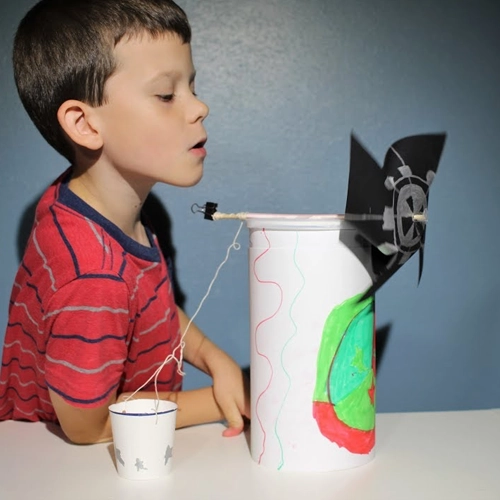
STEM Activities by Age Group
Not every STEM activity fits every age. Younger kids need sensory, simple tasks, while older kids crave challenges and results. This section organizes STEM activities for kids by age, helping you find the best fit for their developmental level and curiosity.
| Age Group | Activity Name | Materials | Description | Key Skills Learned |
|---|---|---|---|---|
| Toddlers (2–3 yrs) | Color Mixing in Zip Bags | Ziplock bags, red/yellow/blue paint, tape | Toddlers squish paint inside sealed bags to mix colors safely. Great for mess-free exploration and learning color combinations. | Color theory, sensory integration, cause & effect |
| Sink or Float Sensory Bin | Water bin, sponge, plastic spoon, rock, toy duck | Kids drop items into water and predict whether they will sink or float. Encourages observation and testing. | Scientific reasoning, prediction, object properties | |
| Pom-Pom Tube Drop | Cardboard tubes, tape, pom-poms, basket | Toddlers drop pom-poms through mounted tubes. A great fine motor activity with early gravity concepts. | Hand-eye coordination, spatial awareness, gravity | |
| Bubble Tower Science | Water, dish soap, clear plastic cup, straw | Kids blow bubbles into a soapy water cup (with supervision). Watch the tower grow and pop. | Cause and effect, observation, air pressure | |
| Preschoolers (3–5 yrs) | Magnet Treasure Hunt | Small magnetic objects, sand/rice bin, magnet wand | Hide items in sensory bins and let kids “fish” them out using magnets. Discuss why some items stick and others don’t. | Magnetism, sorting, early physics |
| Grow a Bean in a Cup | Clear cup, cotton balls, dry bean, water | Place beans in damp cotton and observe sprouting through the clear sides over days. | Plant life cycle, patience, daily observation | |
| Paper Cup Ramp Races | Paper cups (cut), cardboard ramp, stopwatch | Roll cup wheels down ramps of various heights and measure speed. | Motion, force, measurement | |
| Pattern Block Challenge | Pattern blocks, printed templates or cards | Recreate images using shape blocks—animals, patterns, etc. Boosts math and fine motor skills. | Geometry, spatial thinking, problem-solving | |
| Elementary (6–9 yrs) | LEGO Balloon Car | LEGO bricks, balloon, straw, tape | Kids design a balloon-powered LEGO car and test how far it can go. | Engineering, air pressure, propulsion |
| DIY Paper Circuit Card | Paper, LED light, copper tape, coin battery, tape | Create a greeting card that lights up with a circuit using copper tape. | Electricity, circuits, sequencing | |
| Simple Coding with Arrows | Paper arrows, toy figure, floor space | Lay out a path using arrow cards and “program” a toy to follow it. | Logical sequencing, early coding skills | |
| Build a Mini Bridge | Craft sticks, glue, ruler, toy cars | Kids design and build a bridge strong enough to hold toy cars. Then test and improve it. | Scientific reasoning, prediction, and object properties |
Conclusion
STEM learning doesn’t need to happen in a lab—or even a classroom. With the right activities, materials, and a little creativity, STEM can be part of everyday life at home, outdoors, or on special holidays. Whether you’re building with LEGOs, growing a bean sprout, or testing how windmills spin, these hands-on experiences help kids ask questions, solve problems, and think like scientists—all while having fun.
Remember, the best STEM activities for kids aren’t just educational—they’re engaging, flexible, and age-appropriate. Start with a few from this guide and see what sparks your child’s interest. Who knows? You might inspire the next young engineer, botanist, or astronaut—right from your kitchen table or backyard.
FAQs
1. What are some easy STEM activities for beginners (even 3–4 year olds)?
Start with simple, hands-on activities like color mixing in ziplock bags, building with blocks, or testing which items sink or float. These introduce core STEM concepts such as cause and effect, observation, and categorization—perfect for curious little learners just getting started.
2. Can I do STEM at home without buying special materials?
Absolutely. Many STEM activities for kids use everyday household items like paper, tape, spoons, water, and recyclables. It’s more about encouraging creative thinking and exploration than fancy supplies. Even cooking or playing with shadows counts as STEM!
3. How do I find age-appropriate STEM activities for my child?
Look for projects that match your child’s developmental stage. For toddlers, go with sensory or sorting activities. Preschoolers thrive with simple cause-and-effect or building tasks. Elementary-aged kids can handle more complex challenges like circuits, measurements, or design-build tests.
4. Are food, LEGO, and nature activities considered real STEM?
Yes! STEM isn’t limited to science labs. Cooking teaches chemistry and measurement. LEGO supports engineering and design. Nature-based projects like bug hunts or leaf prints explore biology and environmental science. STEM is all about hands-on discovery in any setting.
5. What’s a fun STEM challenge I can do every day with my child?
Try a “5-Minute STEM Challenge” like: “Build the tallest tower using only paper,” or “Design a boat that floats using foil.” Daily challenges spark creativity and problem-solving skills—and they’re a great bonding moment too.

